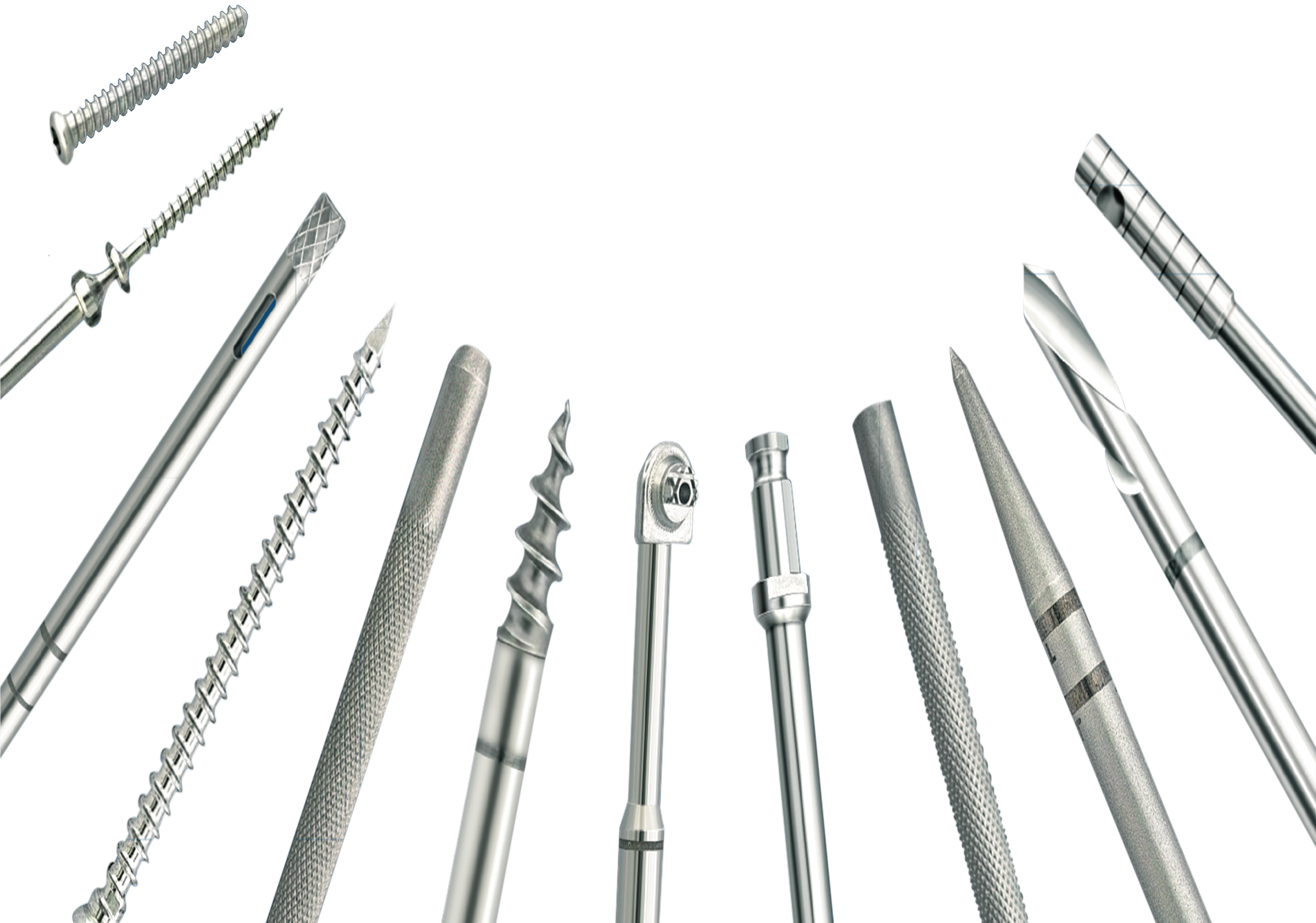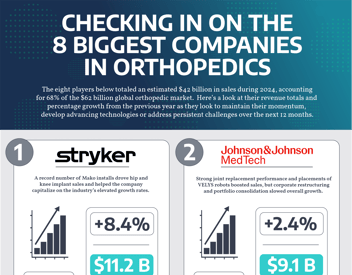Drilling into bone is a fundamental technique across various surgical disciplines, including orthopedics, neurosurgery, reconstructive surgery, craniomaxillofacial surgery, and ear, nose, and throat (ENT) procedures. In orthopedics and sports medicine, specifically, precision surgical drill-bits play a critical role. They are used to create cylindrical tunnels in the bone to house screws or other threaded devices that ensure rigid fixation. This fixation is crucial as it allows the screws to withstand axial and shear forces as well as bending moments, which are essential for the skeleton’s load-bearing functions during movement.
Given the intricate balance required in designing and machining cutting tools for successful orthopedic procedures, it's clear that this process is truly an art form. This meticulous attention to detail is essential not only for surgical precision but also for minimizing the risk of osteonecrosis.
Surgical Drill-Bit Types and Uses
Surgical twist drill-bits come in many sizes and designs, usually with diameters from 0.5mm to 14mm.
Larger diameters are typically used for expanding medullary canals in procedures like osteosynthesis, using devices known as reamers. These reamers are designed to be flexible to accommodate the curvature of long bones like the femur.
The main difference between twist drills and reamers lies in the helix angle.
As the precision surgical drill creates a hole, it’s the job of a reamer to open the hole to a precise size and smoothen the wall. These hole openings are held to tolerances within Ø.0001” diameter (tenths of an inch).
Quick reference of imagining what Ø.0001” is: imagine a human hair. The average outside diameter of a human hair is Ø.003” (three thousandths). Now take that human hair and divide it equally 3 times. That leaves you with three pieces of human hair each equally in diameter of Ø.001” (one thousandths). Next, take one of those pieces and divide it equally 10 times. Resulting in 10 pieces that are Ø.0001” (one tenths). That is the tolerance we work with in precision surgical field.
Cannulated drill-bits, used in surgeries like ACL reconstruction, feature a hollow center to guide smaller pins or k-wires for precise drilling. These bits help maintain the drill’s orientation and do not have a chisel edge. Olive-tipped variants, which lack a traditional fluted section, minimize cartilage damage during drilling, particularly useful in positioning femoral tunnels accurately without obstructing the medial condyle.
K-wires serve as temporary or permanent stabilizers in fracture surgery, available in various tip designs like Trocar and diamond.
Burrs, another rotating bone cutting and shaping tool, are primarily used in arthroscopy and some ENT surgeries to decorticate bone.
Key Considerations when Designing Cutting Features
When designing cutting tools such as drills, reamers, and burrs, several geometric features must be meticulously defined to optimize performance and precision.
- The head flute length of a cutting tool affects its ability to reach into areas without causing unnecessary damage to surrounding
 tissues
tissues - The helix angle, for instance, is crucial for effective chip evacuation and heat management, particularly in high-speed applications.
- Depth of cut, similar to flute length, determines how deep the tool can penetrate into the material with each pass. It's a critical factor for efficiency and control during the cutting process, affecting the tool's performance in both soft and hard materials.
- The flute core/web along with land width, plays a significant role in material removal and chip evacuation. Properly designed flutes ensure the cutting tool remains clear of debris, maintaining efficiency and reducing the risk of overheating or damage.
- The gash/split point depth impacts the tool's ability to initiate a cut and engage with the material. It's especially important in the initial stages of cutting, where precision sets the tone for the entire process without the drill “walking”.
- For drills, the point angle and type of point, effects the tool's aggressiveness and the size of the chips it produces, which are vital for material-specific applications.
Designing the ultimate cutting tool is a meticulous process that blends technical precision with an understanding of the practical challenges faced during precision medical procedures.
Other Design Considerations
Design elements play a crucial role in the effectiveness and efficiency of surgical interventions. Indeed, surgical cutting tools may be designed with a cannulation, which is particularly important in precise surgical applications, where tools may need to guide wires or pins with accuracy or deliver therapeutic agents within the body.
Coatings (DLC, AlTiN, ZrN etc.) are another critical feature. Surgical cutting tools are often coated to enhance the tool’s performance, durability, and lubricity to minimize friction and heat generation during cutting. This not only extends the tool's lifespan but also improves patient safety by reducing the risk of thermal damage to tissues.
Finally , color-coding these devices with epoxy paint can significantly streamline the surgical process, helping surgeons and nurses in the OR quickly identify the correct sizes and types of tools needed during complex procedures.
These design considerations not only facilitate surgical precision and efficiency but also significantly contribute to patient safety.
Bone Necrosis Prevention: Why Sharp Cutting Tools Matter
In Orthopedics and Sports Medicine, cutting tools have played a pivotal role in advancing surgical techniques, enabling precise interventions and rapid recovery. However, the use of dull or sub optimally designed tools can lead to severe complications, including osteonecrosis. Studies have found that the use of a dull or incorrect tools when drilling and cutting bone can subject the bone to unsafe level of heat for extended periods of time.
Did you know? Bone temperatures above 47°C / 116.6˚F during procedures has been found to trigger bone necrosis.
Moreover, poorly designed tools may not provide the clean cuts needed for precise surgical outcomes, potentially leading to uneven healing and compromised structural integrity of the bone.
As such, ensuring that cutting tools are sharp, well-engineered, and specifically tailored for specific procedures is essential to avoid these risks and support successful surgical outcomes.
Advanced Machining Techniques for Surgical Tool Precision

Achieving the highest level of precision in manufacturing surgical cutting tools demands a meticulous attention to detail. Key to this process is the use of precision grinders that can achieve the microscopic tolerances necessary for medical devices.
In addition, the choice of abrasive materials and the calibration of grinding wheels are pivotal for maintaining the sharpness and durability of cutting edges. Machinists must remain vigilant about thermal management during machining, as excessive heat can alter the metallurgical properties of the tools.
In conclusion, the art of designing and machining the ultimate cutting tool is a complex blend of science and craftsmanship. Precision in every aspect of these tools is critical, not only to achieve the mechanical goals of surgical procedures but also to mitigate risks such as osteonecrosis. By emphasizing advanced design features and meticulous machining practices, manufacturers can create cutting tools that enhance the efficacy and safety of orthopedic surgeries, ultimately leading to better patient outcomes.
Here at Intech we offer over 50 years of precision grinding experience. Learn more about how we can help you manufacture drills, taps and specialty cutting tools for Orthopedics here.







Leave a Comment